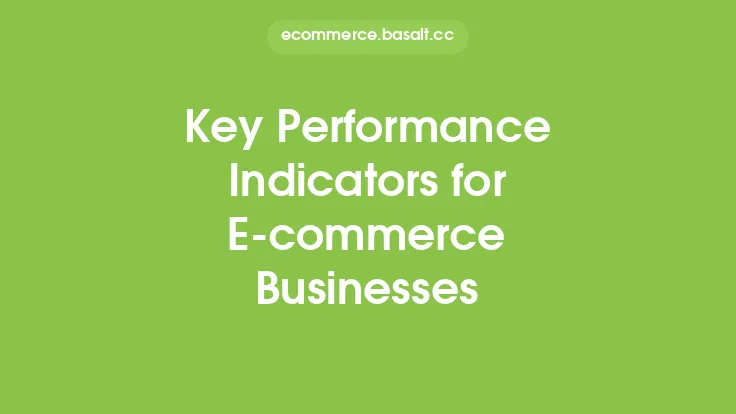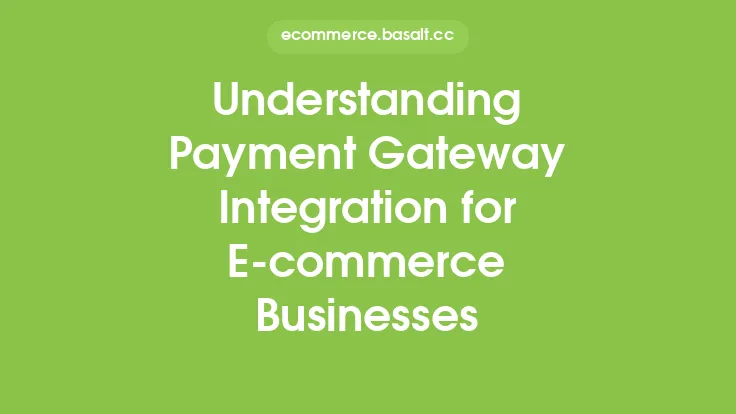To succeed in the competitive world of e-commerce, businesses must have a deep understanding of their performance and the factors that drive growth. This understanding is rooted in the analysis of key e-commerce metrics, which provide insights into customer behavior, sales trends, operational efficiency, and marketing effectiveness. By grasping these metrics, businesses can make informed decisions, optimize their strategies, and ultimately drive business growth.
Introduction to E-commerce Metrics
E-commerce metrics are quantifiable measures used to assess the performance and progress of an online store. They encompass a wide range of data points, from basic sales and revenue figures to more nuanced metrics like customer lifetime value and average order value. Understanding these metrics is crucial because they offer a window into the health and potential of the business. By monitoring and analyzing these metrics, e-commerce businesses can identify areas of strength and weakness, set realistic goals, and develop targeted strategies to improve performance.
Key Performance Indicators (KPIs) in E-commerce
Key Performance Indicators (KPIs) are specific metrics that help businesses evaluate their progress toward their goals. In e-commerce, common KPIs include conversion rate, cart abandonment rate, customer acquisition cost, and retention rate. Each of these KPIs provides valuable insights into different aspects of the business. For instance, a high cart abandonment rate might indicate issues with the checkout process or a lack of trust among potential customers, prompting the business to simplify the checkout process or implement trust badges on the site. Understanding and managing these KPIs is essential for optimizing the customer journey and improving overall business performance.
Customer-Centric Metrics
Customer-centric metrics focus on the behavior, satisfaction, and value of customers. Metrics like customer lifetime value (CLV), average order value (AOV), and customer satisfaction (CSAT) scores are critical for understanding the health of customer relationships and the potential for long-term growth. For example, a high CLV indicates that customers are likely to make repeat purchases, suggesting that investments in customer retention and loyalty programs could yield significant returns. Similarly, a low AOV might suggest opportunities to upsell or cross-sell products, increasing the average revenue per user.
Operational and Logistics Metrics
Operational and logistics metrics are vital for ensuring the smooth and efficient running of e-commerce operations. These include metrics like fulfillment rate, shipping time, inventory turnover, and return rate. A high fulfillment rate and fast shipping times can significantly enhance customer satisfaction and loyalty, while efficient inventory management can reduce costs and minimize the risk of overstocking or understocking. Monitoring return rates can also provide insights into product quality issues or sizing problems, allowing businesses to make necessary adjustments to product offerings or sizing charts.
Marketing and Acquisition Metrics
Marketing and acquisition metrics help businesses understand the effectiveness of their marketing strategies and the efficiency of their customer acquisition processes. Metrics such as cost per acquisition (CPA), return on ad spend (ROAS), and social media engagement rates are essential for evaluating the performance of marketing campaigns and allocating marketing budgets effectively. A low CPA and high ROAS indicate that marketing efforts are yielding a good return on investment, while high engagement rates on social media can suggest strong brand awareness and customer interaction.
Analyzing and Acting on E-commerce Metrics
Analyzing e-commerce metrics involves more than just tracking numbers; it requires interpreting data to identify trends, patterns, and areas for improvement. Businesses should regularly review their metrics to understand what is working and what needs adjustment. This analysis should be followed by action, whether it's optimizing product pages to improve conversion rates, implementing email marketing campaigns to reduce cart abandonment, or investing in logistics to speed up shipping times. The ability to act on insights from e-commerce metrics is what ultimately drives business growth and competitiveness in the e-commerce space.
Conclusion
Understanding key e-commerce metrics is fundamental to the growth and success of online businesses. By grasping the nuances of customer-centric, operational, and marketing metrics, businesses can navigate the complex e-commerce landscape more effectively. Continuous monitoring and analysis of these metrics, coupled with strategic actions based on the insights gained, are essential for optimizing performance, enhancing customer experience, and driving business growth. In the ever-evolving world of e-commerce, staying informed and adaptable through data-driven decision making is not just a strategy, but a necessity for survival and success.





